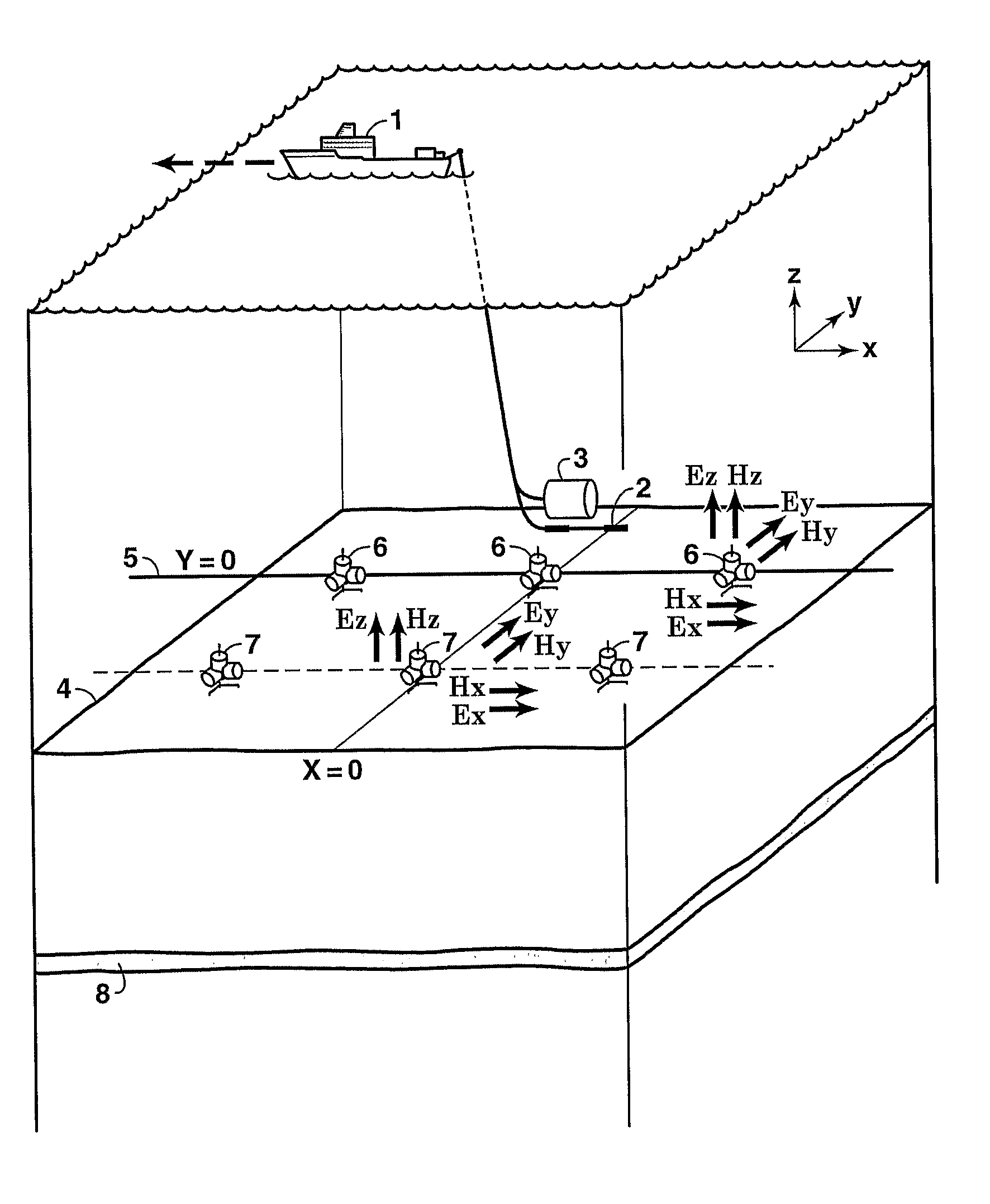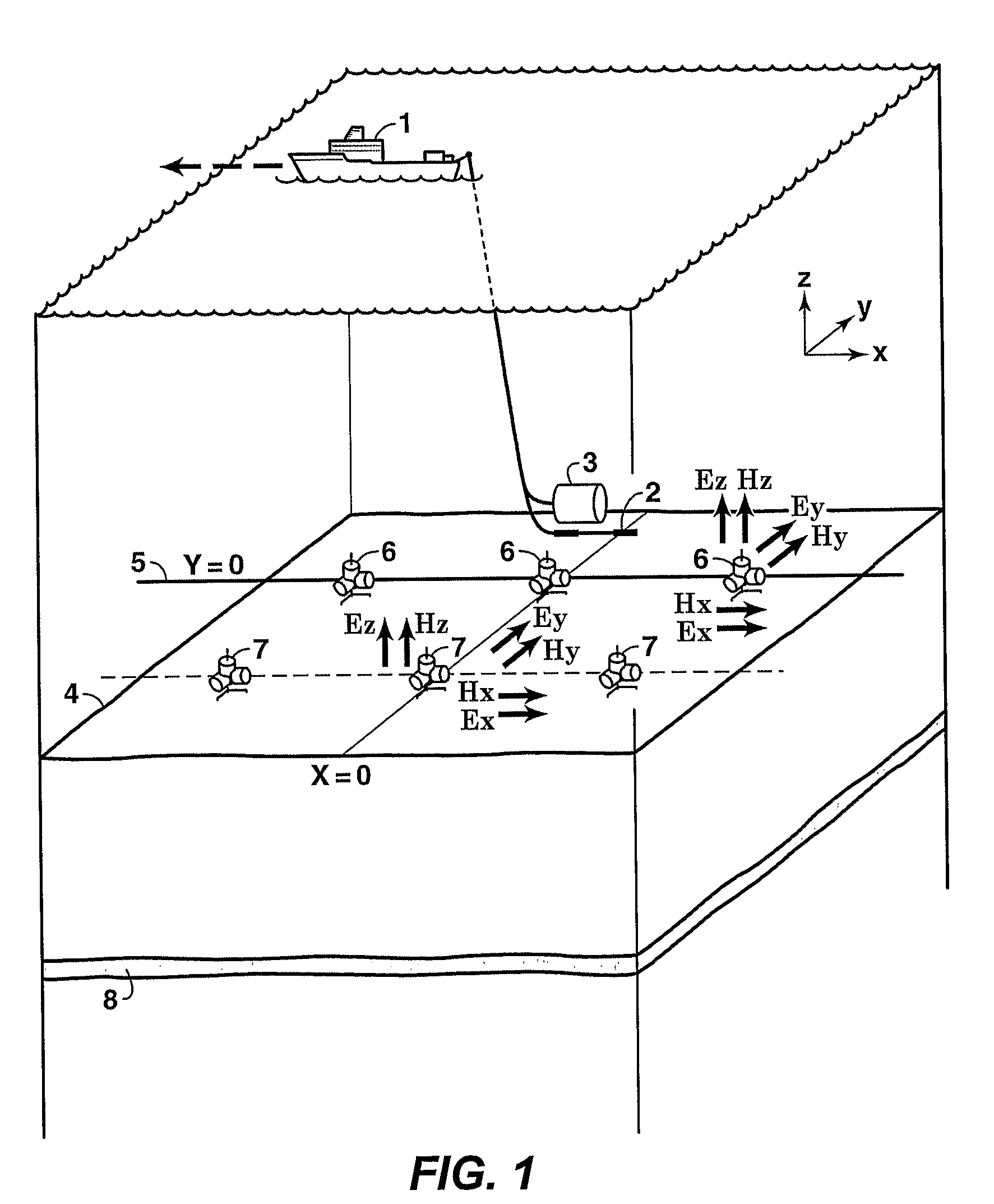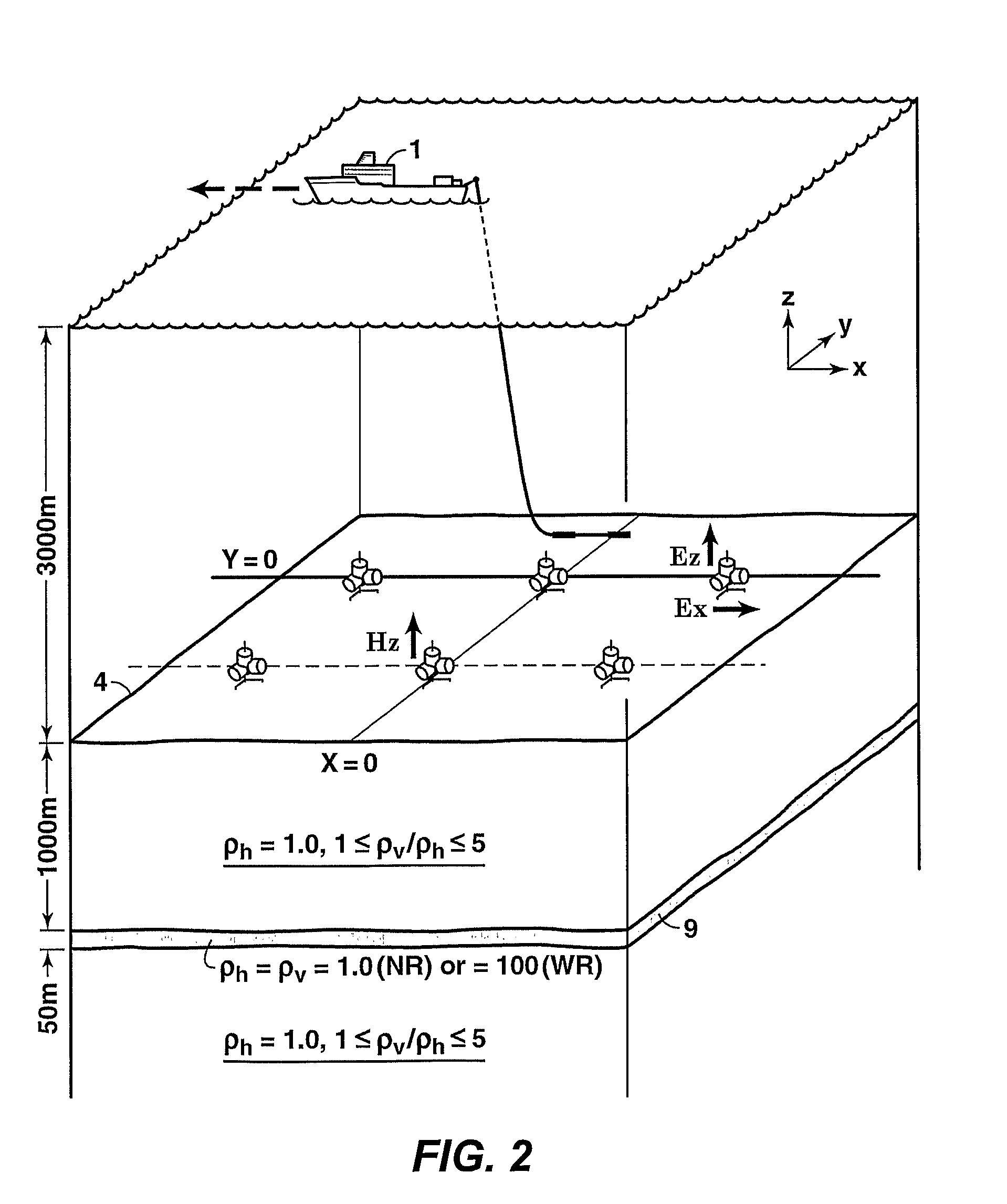Method for determining earth vertical electrical anisotropy in marine electromagnetic surveys
a technology of electromagnetic surveys and vertical electrical anisotropy, which is applied in the direction of reradiation, detection using electromagnetic waves, instruments, etc., can solve the problems of not being used for offshore hydrocarbon applications, affecting interpretation, and much lower efficiency (poor coupling) than hed sources
- Summary
- Abstract
- Description
- Claims
- Application Information
AI Technical Summary
Benefits of technology
Problems solved by technology
Method used
Image
Examples
examples
[0043]In lieu of actual CSEM data of the type and combination required in this invention, numerical calculations that employ 1D methods well known to practitioners of the art are used herein to demonstrate the EVTI responses utilized by the invention. FIG. 2 shows the survey geometry used for this model calculation of CSEM response data. The example uses a seawater depth of 3000 meters and a 50 meter thick, simulated hydrocarbon reservoir 9 buried 1000 meters below the seafloor 4. FIGS. 3A and 3B show the calculated changes in the HED source-normalized (i.e., responses for a unit dipole of length one meter and current of one Ampere) online Ex seafloor field amplitudes in volts / m (FIG. 3A) and the absolute phases (FIG. 3B) caused by EVTI of varying magnitudes (1:1 to 5:1 EVTI ratio ρv:ρh, where ρv is the vertical resistivity and ρh is the horizontal resistivity), corresponding to the survey geometry and earth parameters of FIG. 2 for a sinusoidal source frequency of 0.25 Hertz. The a...
PUM
 Login to View More
Login to View More Abstract
Description
Claims
Application Information
 Login to View More
Login to View More - R&D
- Intellectual Property
- Life Sciences
- Materials
- Tech Scout
- Unparalleled Data Quality
- Higher Quality Content
- 60% Fewer Hallucinations
Browse by: Latest US Patents, China's latest patents, Technical Efficacy Thesaurus, Application Domain, Technology Topic, Popular Technical Reports.
© 2025 PatSnap. All rights reserved.Legal|Privacy policy|Modern Slavery Act Transparency Statement|Sitemap|About US| Contact US: help@patsnap.com



